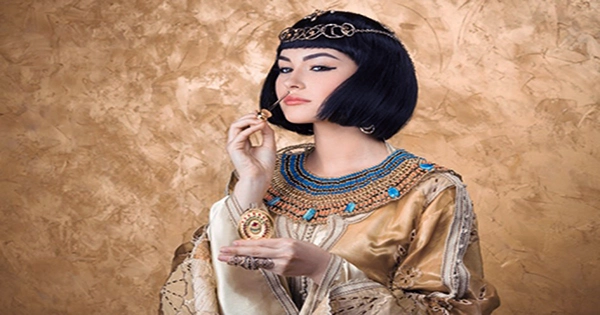Using a mix of historical recipes, chemical analysis, and trial and error, something like the scent Cleopatra used to make Julius Caesar and subsequently Marc Antony fall in love with her has been recreated. Cleopatra’s nose, according to Blaise Pascal, would have transformed the face of the world if it had been shorter. The question presupposes that it was Cleopatra’s beauty, not her intellect that drew two of the ancient world’s most powerful men to her. Others might wonder how things might have turned out if her scent had been a little less seductive. If the question remains unanswered, at the very least we now know what that perfume smelled like.
Egypt was known throughout history for the smells it generated. They’d been practicing for at least 3,000 years by the time of Cleopatra VII, and they’d gotten rather good at it. A book of recipes ascribed to the recently departed princess surfaced shortly after her death. Scientists have sought to recreate the procedure as well as the components for another 2,000 years, publishing their findings in Near Eastern Archaeology. “Rather than our contemporary alcohol, the substrate for [Egyptian] fragrances and unguents was vegetable oil or animal fat,” the article states. “Scents were generated by inhaling smoke produced by burning aromatic resins, barks, and plants (“perfume” comes from per fumum, which means “through smoke”), or by macerating resins, flowers, herbs, spices, and wood.”
However, the actual meaning of the hieroglyphics used to record these recipes has faded with time. The names of the oils used in Cleopatra’s time in burial ceremonies and temple rituals are known, but their composition is unknown. Despite centuries of Greek and Roman control, Greek and Roman records are simpler to transcribe but are regarded less credible because the authors were typically outsiders, not the perfume manufacturers. A specific point of contention is a component known as “oil of the fragrant nut,” the identity of which nut is uncertain. The discovery of what looks to be a perfume factory at Thmouis, however, has opened up new possibilities.
Mendes’ scents were famous throughout the Mediterranean, and Thmouis was an extension of Mendes. Because there are so many ceramic perfume containers at the site, researchers believe they were used commercially rather than for personal use. The molecules contained in the jars, including the Nile silt used to manufacture the vessels and leftovers from the contents, were examined using X-ray fluorescence.
Dr. Dora Goldsmith of Frele Universitat Berlin and Dr. Sean Coughlin of Humboldt-Universitat zu Berlin used historical texts and current chemistry to investigate a variety of probable compounds in the hopes of identifying a perfume so alluring that a monarch would sacrifice half an empire. The couple describe using a range of ingredients and cooking methods: “With a spicy base note of freshly powdered myrrh and cinnamon, complimented by sweetness, one constellation of variables generated a really lovely perfume.” Furthermore, the appealing scent lingered for two years, confirming stories that Egyptian fragrances maintained their quality when transferred.
Although the actual scent of Cleopatra’s perfume will likely never be known, guests to the National Geographic Museum’s Queens of Egypt exhibition in 2019 were able to sample an approximation called Eau de Cleopatra. The item would have done more than just smell nice. Unpleasant scents were subdued by antifungal and antibacterial substances in the mix, enabling the desirable odors to shine. The project is part of a tiny but developing field of ancient fragrance recreation. According to ScienceNews, Goldsmith’s work includes building “smellscapes” of ancient Egyptian towns, which include the royal palace, temples, and workshops where everything from sandals to swords was created.
















